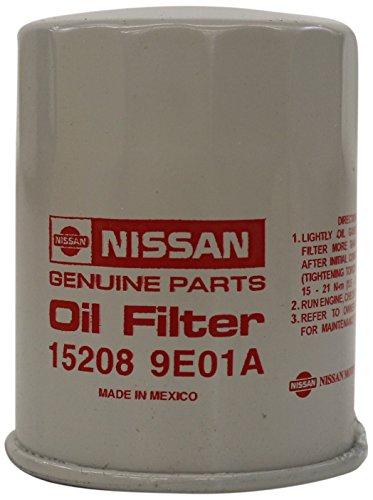As an Amazon Associate, I earn from qualifying purchases
If you drive a Nissan Altima, you know how important it is to keep your car running smoothly. One key part of maintenance is checking your CVT fluid level.
But what if your Nissan Altima doesn’t have a dipstick for the CVT fluid? That can be confusing and frustrating. Don’t worry—this guide will show you exactly how to check your CVT fluid level without a dipstick. By the end, you’ll feel confident keeping your transmission in top shape and avoiding costly repairs.
Keep reading to learn the simple steps you can take right now.
Cvt Fluid Basics
Understanding CVT fluid is key for maintaining your Nissan Altima. This fluid keeps the transmission running smoothly. It lubricates moving parts and cools the system. Without proper fluid levels, the transmission can wear out fast. Knowing the basics helps you care for your car better.
Role Of Cvt Fluid
CVT fluid lubricates the transmission’s moving parts. It helps the belt or chain move smoothly. The fluid also cools the transmission during operation. Proper fluid levels prevent overheating and damage. Clean, fresh fluid improves fuel efficiency and performance.
Why No Dipstick?
Many Nissan Altima models do not have a dipstick for CVT fluid. The design keeps the transmission sealed and protected. It prevents contamination and fluid leaks. Checking fluid requires special tools or a mechanic’s help. This design helps maintain fluid quality and transmission health.
Tools Needed
Checking the CVT fluid level in a Nissan Altima without a dipstick requires specific tools. These tools help you measure the fluid accurately and keep your vehicle running smoothly. Preparing the right equipment ensures the process is safe and effective.
Essential Equipment
You need a few basic tools to check the fluid level. A funnel with a narrow tip helps pour fluid without spills. A clean container catches any excess fluid during the check. A digital thermometer measures fluid temperature, as it must be warm for an accurate reading. Lastly, a flashlight lets you see inside tight spaces clearly.
Safety Gear
Safety is important while working on your car. Wear gloves to protect your hands from hot fluid and dirt. Safety glasses shield your eyes from splashes or debris. Use long sleeves to avoid skin contact with hot parts. A clean workspace reduces the risk of slipping or accidents.
Preparing Your Nissan Altima
Preparing your Nissan Altima is the first step to check the CVT fluid level without a dipstick. This process ensures accurate fluid measurement and helps avoid mistakes. Taking time to prepare your car properly saves effort and protects your vehicle’s transmission.
Park On Level Ground
Find a flat and even surface to park your Nissan Altima. Level ground ensures the fluid inside the transmission is settled. This makes the fluid level reading more accurate. Avoid slopes or uneven areas to prevent false readings.
Warm Up The Engine
Start the engine and let it run until it reaches normal operating temperature. Warm fluid flows better and gives a true level reading. Keep the car in park with the brake engaged during this time. Do not rev the engine or drive before checking the fluid.

Credit: www.youtube.com
Locating The Fluid Check Port
Checking the CVT fluid level in a Nissan Altima without a dipstick requires finding the fluid check port. This port allows you to see and adjust the fluid level safely. Knowing its location is important for proper maintenance and smooth transmission performance.
Finding The Transmission Fill Plug
The transmission fill plug is on the side of the CVT case. It looks like a small bolt or screw. Usually, it sits near the middle of the transmission housing. You may need a flashlight to spot it clearly. The plug is often marked or has a unique shape.
Use a wrench to remove this plug carefully. Be ready for some fluid to drip out. This step lets you add or remove fluid if needed. Always clean the area around the plug first to avoid dirt entering the system.
Identifying The Fluid Level Plug
The fluid level plug is close to the fill plug but lower on the transmission. It controls the fluid level inside the CVT. Removing this plug lets excess fluid drain out if the level is too high. This plug helps keep the fluid at the right height for proper function.
Check the vehicle’s manual to confirm the exact location of the fluid level plug. Use the correct tools to avoid damage. Make sure the car is on a flat surface before checking. This ensures an accurate fluid level reading.
Checking The Fluid Level
Checking the CVT fluid level in a Nissan Altima without a dipstick requires a careful approach. This process helps keep the transmission healthy and working well. You need to follow specific steps to check the fluid level correctly. This section explains how to do it safely and clearly.
Removing The Check Plug
First, locate the check plug on the transmission case. It is usually on the side of the transmission. Make sure the engine is warm but turned off before you start. Use a wrench to carefully remove the check plug. Have a container ready to catch any fluid that might spill out. Removing this plug allows you to see if the fluid is at the right level.
Fluid Level Inspection
After removing the check plug, check the fluid level by looking inside the opening. The fluid should be near the edge of the hole. If fluid drips out slowly, the level is correct. If no fluid comes out, the level is low and needs topping up. Also, observe the fluid color. Clean fluid is usually bright and clear. Dark or burnt-smelling fluid means it needs changing.
Using The Correct Fluid
Always use the right CVT fluid recommended by Nissan. Using the wrong fluid can damage the transmission. Check your owner’s manual for the exact type needed. Pour the fluid carefully through the check plug hole. Add small amounts and recheck the level. Proper fluid ensures smooth shifting and longer transmission life.
Adjusting Fluid Level
Adjusting the CVT fluid level in a Nissan Altima without a dipstick requires care and precision. The fluid must be at the right level for the transmission to work well. Too little fluid can cause damage. Too much fluid can lead to leaks or poor performance. This section explains how to add fluid safely and avoid overfilling.
Adding Fluid Safely
Start by warming up the car to normal operating temperature. This helps the fluid flow properly. Park the car on a level surface and keep the engine running. Locate the fill plug on the transmission case. Use a clean funnel to pour the CVT fluid slowly. Add small amounts at a time. Check the fluid level carefully after each addition. Stop adding fluid once the correct level is reached.
Avoiding Overfill
Overfilling can cause fluid to spill and damage parts. It may also cause foaming, which reduces lubrication. Always follow the manufacturer’s fluid amount guidelines. If fluid spills, clean it immediately. Use the dipstick tube or fill plug hole to check the level. The fluid should just start to drip out when full. Never force extra fluid into the system. Proper fluid level keeps the transmission smooth and lasting longer.
Signs Of Fluid Issues
Knowing the signs of CVT fluid issues helps keep your Nissan Altima running smooth. Fluid problems can cause serious transmission damage. Early detection saves time and money. Watch for changes in fluid color, smell, and how your car drives. These clues show when the fluid needs attention.
Fluid Color And Smell
Check the fluid color if possible. Healthy CVT fluid is bright red or pink. Dark brown or black fluid means it is old or dirty. A burnt smell signals overheating or damage. Fresh fluid has a slightly sweet smell. Strange colors or odors warn of trouble inside the transmission.
Transmission Performance
Feel how the transmission shifts. Slipping or jerking means fluid may be low or degraded. Delayed engagement or rough shifting also points to fluid issues. Strange noises during gear changes are a red flag. Poor performance often signals the CVT fluid needs replacing or topping up.

Credit: www.transmissiondigest.com
When To Seek Professional Help
Strange noises or slipping gears signal a need for expert help. If fluid checks seem confusing, a mechanic can assist safely. Avoid driving if the transmission feels rough or unresponsive.
Signs Your Cvt Fluid Needs Expert Attention
Checking CVT fluid in a Nissan Altima without a dipstick can be tricky. Some signs mean the fluid level or quality needs a professional’s check. Strange noises while driving, such as whining or grinding, can signal fluid problems.
Shifting delays or slipping gears also point to fluid issues. If the transmission feels hot or you smell burning, stop driving and get help. These symptoms suggest the fluid might be too low or dirty.
Why Diy Checks May Not Be Enough
The CVT system is complex and sealed tightly. Without a dipstick, fluid checks need special tools and knowledge. Professionals use the right equipment to measure fluid level and condition accurately.
They can spot leaks, worn parts, or other problems linked to fluid issues. Trying to check fluid without experience can cause damage or miss hidden problems. A trained technician can keep your Altima running smoothly.
Choosing The Right Moment To Visit A Mechanic
Do not ignore warning lights on your dashboard. The transmission or check engine light may indicate fluid or transmission trouble. Strange driving behavior or noises means it is time to act.
Regular servicing helps keep the CVT fluid in good shape. Follow your Nissan’s service schedule for fluid changes. Early professional checks save costly repairs later.

Credit: gearsmagazine.com
Frequently Asked Questions
How Do I Check Cvt Fluid In Nissan Altima Without Dipstick?
Locate the CVT fluid check plug under the car. Remove it to see if fluid flows out.
Where Is The Cvt Fluid Check Plug On Nissan Altima?
The check plug is usually on the transmission side, near the bottom of the CVT case.
Can I Check Cvt Fluid Level Without Special Tools?
Yes, basic tools like a wrench to remove the check plug are enough for the job.
How Often Should I Check Cvt Fluid In Nissan Altima?
Check CVT fluid every 30,000 miles or as recommended in your car’s manual.
What Are Signs Of Low Cvt Fluid In Nissan Altima?
Look for slipping gears, overheating, or strange noises from the transmission area.
Is It Safe To Drive Nissan Altima With Low Cvt Fluid?
Driving with low fluid can damage the transmission. Check and refill fluid promptly.
Conclusion
Checking the CVT fluid level on a Nissan Altima without a dipstick is simple. Follow the steps carefully and use the right tools. Keep the engine warm and the car on a level surface. This helps you get an accurate reading.
Regular checks help your transmission last longer. Pay attention to the fluid color and smell too. Clean, clear fluid means good health. Dark or burnt fluid signals a problem. Stay safe and keep your car running smoothly with these easy tips.
As an Amazon Associate, I earn from qualifying purchases


